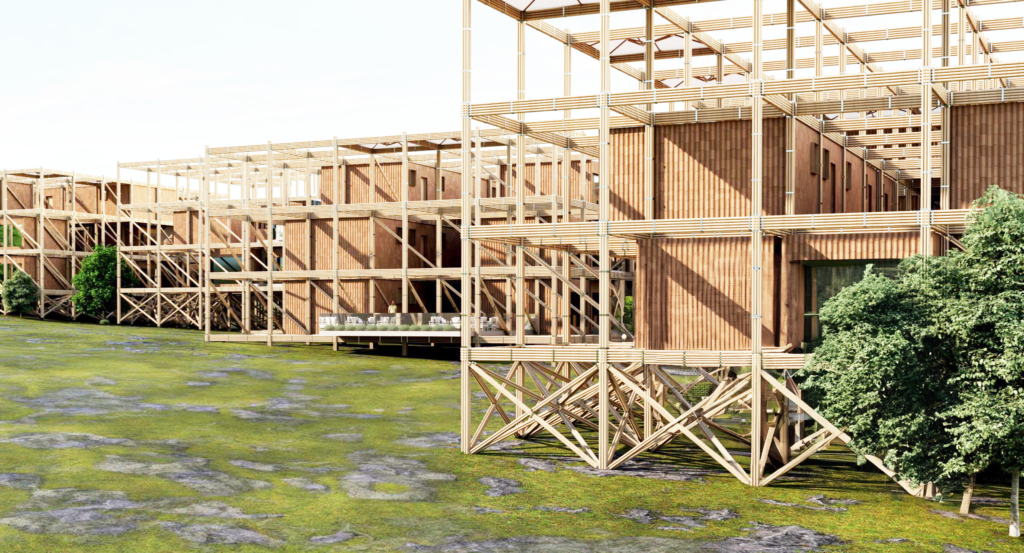Cusco Social Housing I Peru
Bamboo, a fast-growing and renewable material, is often used in various construction applications due to its strength, durability, and sustainability. In a modular context, we are especially interested in creating a multiple-floor building with stacked bamboo structure. We focus on creating a building system which can be prefabricated and assembled in a modular fashion, allowing for user flexibility and ease of construction.

01 Reference
At the early development of the project, we have drawn inspiration from these 3 notable references :
Cedric Price: Generator,
Cedric Price’s visionary approach to architecture, particularly his emphasis on buildings evolving and responding to changing needs, remains influential.
Chris Precht: One with the bird,
Studying the multiple-floor building by Chris Precht, particularly focusing on the modularity of the space and the scale of the bamboo structure,
Studio Cardenars: Energy Efficient Bamboo House
The project indeed offers inspiring insights, especially with its innovative use of bamboo as the main grid structure housing the programs and the artistic approach to joinery.
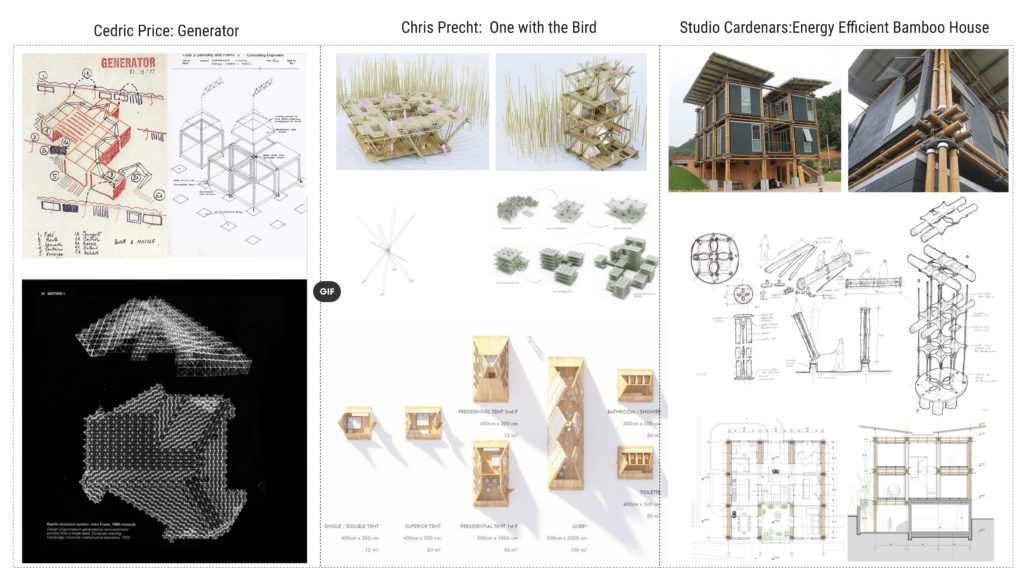
02 Parametrization (graphical pseudo code)
The project development process has been methodically structured, encompassing several key stages. Initial efforts focused on an in-depth exploration of bamboo, delving into its inherent properties, benefits, and limitations, with a parallel investigation into methods for reinforcing this versatile material.
Simultaneously, we engaged in developing a modular system utilizing the Wasp plugin,The exploration extended to the realm of voxel aggregation in architectural tectonics, with a specific emphasis on categorizing voxels based on functionality, reflecting a commitment to functional diversity and adaptability in the architectural design aspect.
Conclusively, the project undertook a analysis of CO2 consumption.
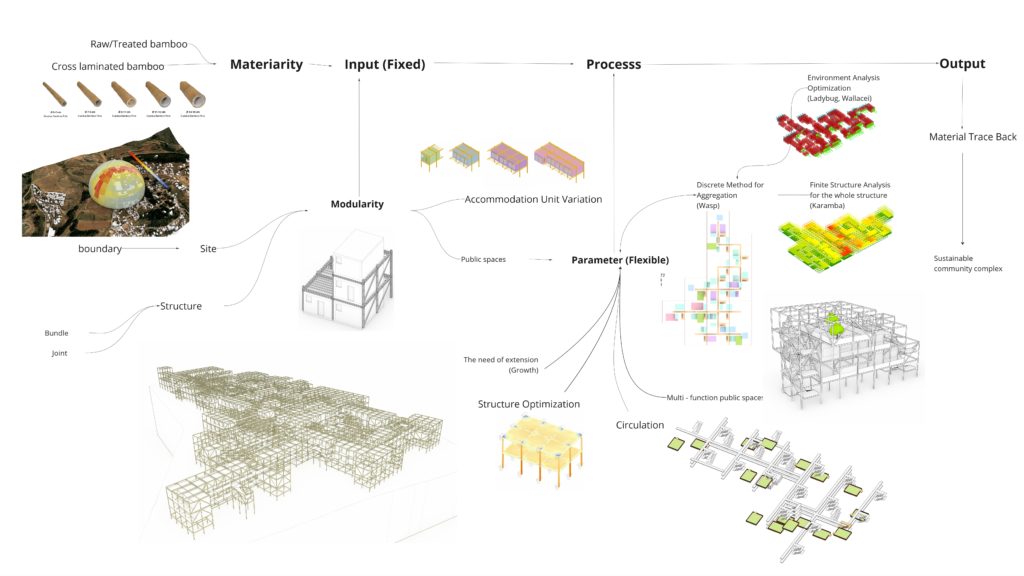
03 System Materialization
We have compiled a comprehensive list of all building construction components. The grid structure and core system are identified as the foundational infrastructure and will be prioritized for initial construction. The housing units, designed for prefabrication, will be seamlessly inserted into the grid system. Additionally, the garden will be incorporated as a modular system, further enhancing the versatility and adaptability of the overall architectural design.
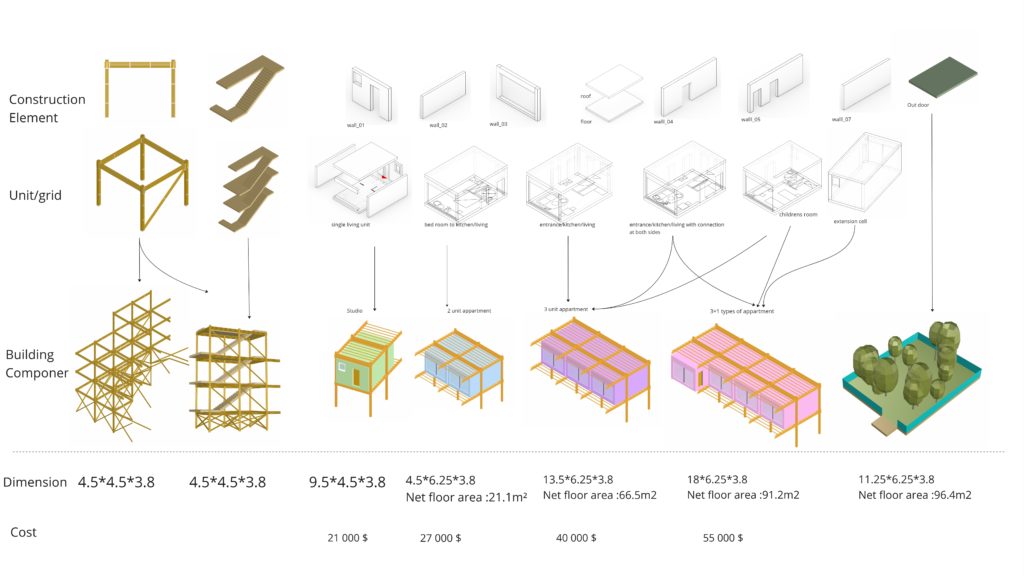
04 Context Implantation
- Our initial step involves defining the primary axes of the site, delineated by the main road and the axis running the length of the site.
- Subsequently, we apply voxelization to cluster the site’s volume, aligning the grid with the main road—also the longest edge—to maximize the number of clusters.
- The circulation system establishes connections between clusters, employing the minimum spanning tree algorithm with the site axis as the attractor. This optimizes the corridor for efficient movement along the site.
- The structure grid is then determined based on the clusters and the circulation system.
- Using the Wasp tool, we aggregate functions into the structure grid, incorporating environmental optimizations.
- Lastly, we fine-tune the structure considering applied loads. The frame, designed for future expansion, is reinforced for strength, with the option to eliminate unnecessary diagonal braces against wind loads when not essential.
05 Matrix
Within this matrix, we experiment with various cluster sizes to observe their impact on site density and unit distribution. The 7×7 configuration is selected as it effectively utilizes the site area while simultaneously generating minimum 2×2 atrium spaces between clusters.
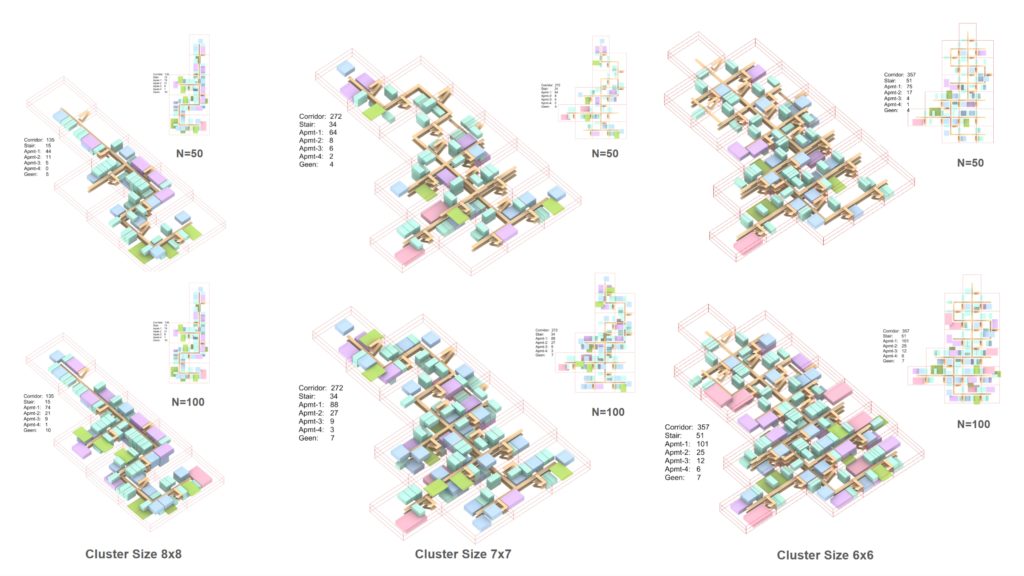
06 Environmental Parameter – Access to the Sun
During the whole year, Cusco experiences consistently cold temperatures in the night. To harness the most advantageous solar radiation, primarily originating from the north, we employ genetic algorithms to maximize its utilization. Our constraints revolve around the unit ratio and quantity, with the stochastic aggregation’s seed serving as a key parameter in our optimization process.
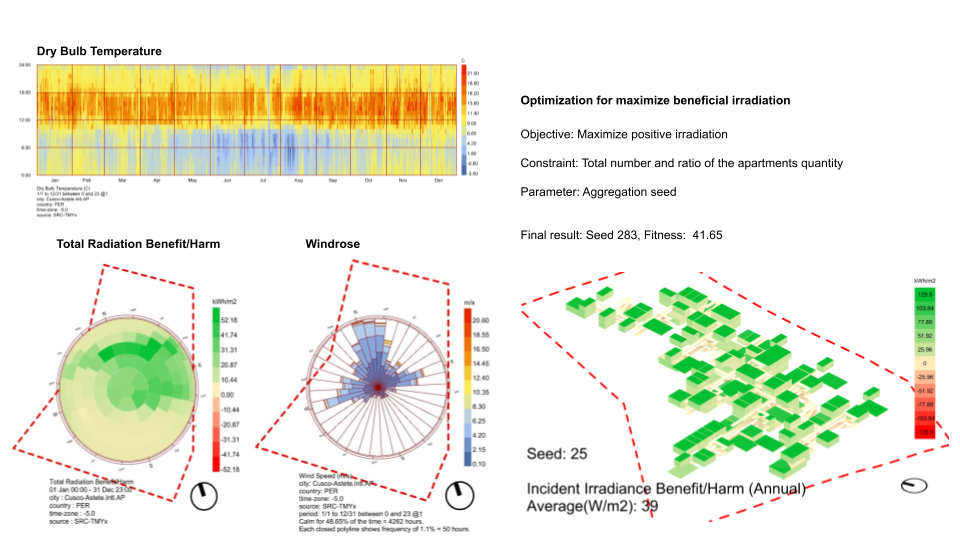
07 Structure
Our approach initiates with a single structure grid and one cell. Through iterative testing, we identify the most efficient method—employing a system of floors connected to beams and columns—to bear the load from individual units. Progressing from small-scale testing to larger clusters, we refine our cross-sectional optimization.
Upon fixing the structure frame, we introduce diagonal bracing to counter wind loads, strategically optimizing their locations and quantities. We predefine potential bracing locations, ensuring they don’t obstruct entrances, and leverage Karamba to eliminate redundant elements. Remarkably, this process results in the removal of 600 elements, enhancing both efficiency and structural integrity.
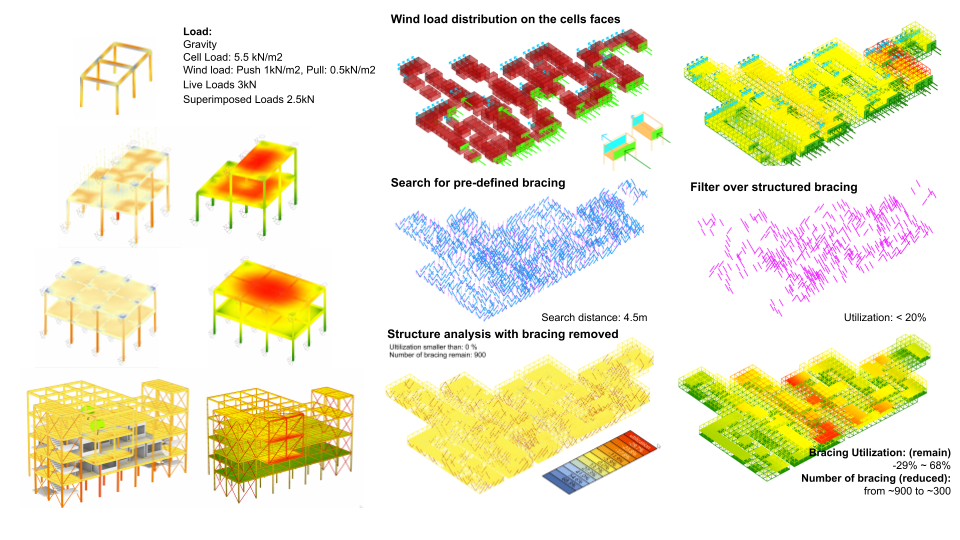
Larger Cluster Structure Test
Optimizing Bracing for Wind Load Resistance
08 Plan, Section and Joinery
In the 2D drawings, you can observe how the units are positioned on the terrain. The detailed apartment plans illustrate how individual cells are interconnected to create various types of apartments.
Additionally, we pay attention to joint detailing. The bamboo is bundled and interwoven to enhance strength, while metal elements facilitate flexible connections for bracing. This design allows for disassembly when needed.

10 Axonometry
An axonometric projection reveals a vision where a bamboo grid structure intertwines with modular units :
- Bamboo Grid: Three-dimensional lattice showcasing stability and adaptability.
- Living Units: Diverse modular units seamlessly integrated into the bamboo grid, offering flexibility in design and function.
- Circulation: Corridors, walkways and bridges facilitate fluid movement, promoting community interaction.
- Public Garden: Distributed green spaces providing a communal haven for residents.

11 Material Traceback
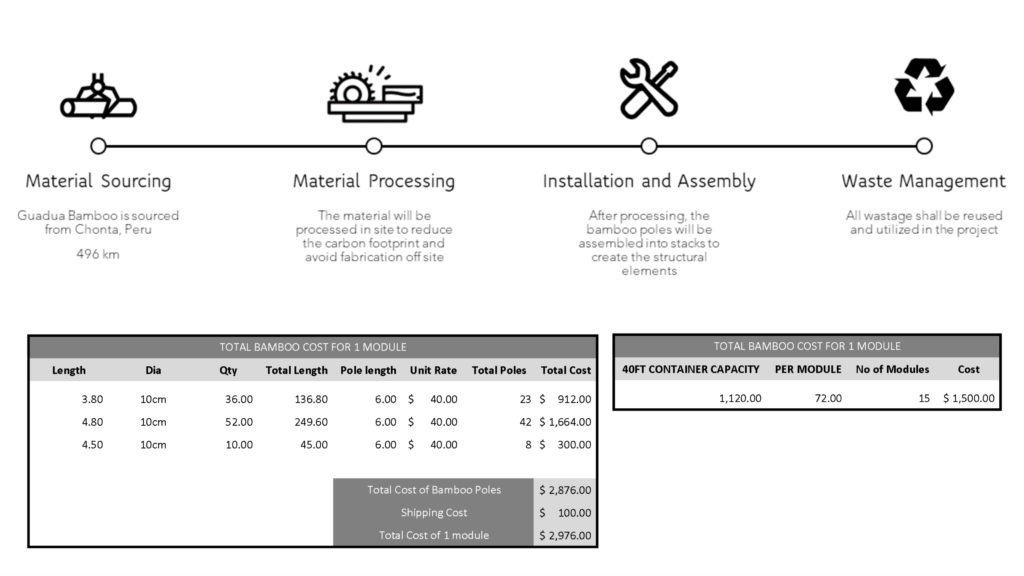
Guadua Bamboo is sourced locally from Chonta, Peru and around 450km away from the site. To involve the local community in the project, and considering the low-tech requirements for processing bamboo, all processing will take place on site using local craftsmen. The project also considers utilizing the wastage as both biomass for producing energy and to be utilized in nearby similar constructions.
